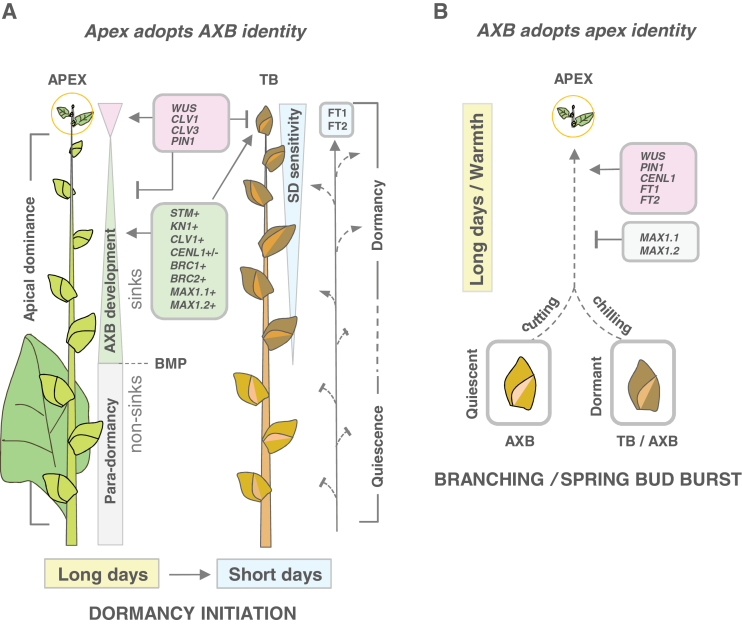Fig. 9.
Conceptual model of the interactive environmental and molecular regulation of identity swapping of apices and axillary meristem in hybrid aspen. (A) In long days (LD), the shoot apical meristem (SAM), seated at the apex (encircled), produces internodes, leaves, and para-dormant AXBs. Under short days (SD), the SAM adopts axillary bud (AXB) identity and produces a terminal bud (TB). SAM-specific gene expression is down-regulated in developing AXBs as well as in developing TBs (pink triangle and pink gene box). During development, AXBs and TBs produce an embryonic shoot, while up-regulating bud-specific genes (green triangle and green gene box). Development is complete at the bud maturation point (BMP; stippled line), after which gene expression remains relatively stable (grey square). Key genes for SAM function and AXB development are mutually exclusive (opposing triangle summits; pink and green gene boxes; + indicates up-regulation, +/– up-/down-regulation). AXBs keep the same basic programme in both photoperiods, but after 5 weeks of SDs in both AXBs and TBs CENL1 is completely down-regulated during dormancy establishment. AXBs gradually lose their responsiveness to SDs (inverted blue triangle) towards the BMP, where sink activity and accessibility to phloem-delivered photoperiodic signals such as FT1 and FT2 have ceased (blue peptide box, arrows). These AXBs overwinter in a suppressed, quiescent state. AXB number is arbitrary. (B) During bud burst and branching, AXBs adopt apex identity. This requires release from dormancy by chilling and LDs/warmth, or removal of para-dormancy by cutting. Genes that promote development of second-generation apices (pink gene box) are shared with the apex, and genes that oppose this (grey gene box, T-shape) are shared with AXBs.

